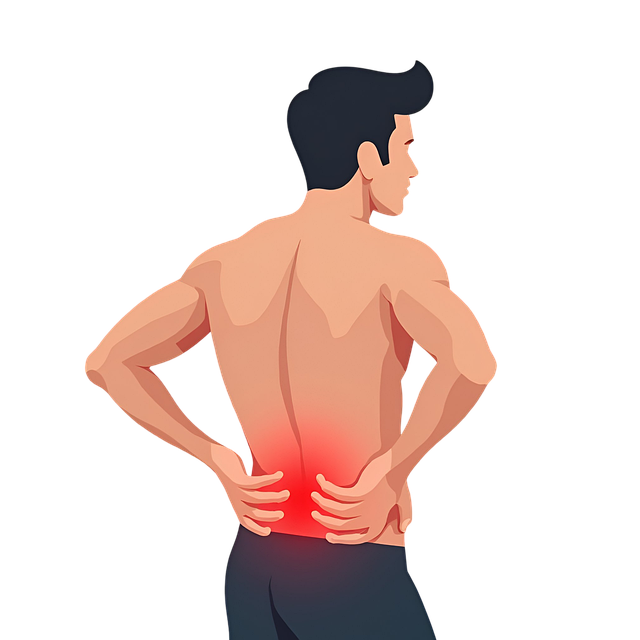Chronic pain, affecting millions globally, is managed through non-opioid treatments like acupuncture, which targets specific body points to alleviate symptoms and causes of back, neck, joint, and migraine pain. As an ancient practice with modern recognition, acupuncture offers a drug-free, natural alternative with minimal side effects compared to medications. Studies support its effectiveness for conditions like arthritis and inflammation, enhancing patients' mobility and quality of life. Choosing the right acupuncturist involves licensing, expertise, certification, and patient reviews, with realistic expectations and open communication for optimal results.
Tired of relying on medication for persistent back, neck, or joint pain? Explore the ancient practice of acupuncture as a drug-free alternative. This holistic approach has gained modern popularity for its effectiveness in managing chronic pain. Understanding how acupuncture works on both physical and emotional levels reveals its profound benefits. From alleviating muscle tension to restoring balance, it offers a natural solution with minimal side effects. Discover how acupuncture can provide relief for specific conditions and learn tips for finding qualified practitioners.
- Understanding Chronic Pain and Its Impact
- Acupuncture: An Ancient Practice for Modern Times
- How Acupuncture Works to Alleviate Pain
- Benefits of Acupuncture for Specific Pain Conditions
- The Safety and Efficacy of Acupuncture Therapy
- Finding the Right Acupuncturist and Setting Realistic Expectations
Understanding Chronic Pain and Its Impact

Chronic pain is a complex condition that affects millions worldwide, often leading to significant physical and emotional distress. Unlike acute pain, which serves as a warning signal, chronic pain persists for extended periods, typically lasting longer than 12 weeks. It can be caused by various factors such as injuries, conditions like arthritis or fibromyalgia, or even nerve damage. This persistent discomfort can severely impact daily life, limiting mobility and affecting overall quality of life.
Many individuals seeking relief from chronic pain turn to non-opioid pain relief methods due to the growing awareness of the risks associated with long-term opioid use. Acupuncture has emerged as a popular alternative treatment for managing various types of chronic pain, including back pain, neck pain, and migraines. By stimulating specific points on the body, acupuncture helps reduce inflammation and blocks pain signals, offering a natural and effective inflammation treatment without the side effects often linked to prescription medications.
Acupuncture: An Ancient Practice for Modern Times

Acupuncture has its roots in ancient Chinese medicine, but it has evolved to become a widely recognized and effective treatment for various modern-day ailments, particularly chronic pain. This traditional practice involves inserting thin needles at specific points on the body, known as acupuncture points, to promote healing and restore balance. What makes acupuncture stand out as a drug-free alternative is its ability to target not just the symptoms but also the underlying causes of pain.
For individuals struggling with persistent back pain, neck stiffness, sciatica, or even migraine headaches, acupuncture offers a natural approach to relief. The gentle stimulation of acupuncture needles can help relax muscles, reduce inflammation, and enhance the body’s natural healing mechanisms. Many patients have found success in managing their joint pain through this ancient therapy, discovering a drug-free way to regain mobility and comfort. Moreover, sciatica acupuncture and migraine acupuncture are specific techniques within this practice, tailored to address these common yet debilitating conditions without relying on medications.
How Acupuncture Works to Alleviate Pain

Acupuncture works by stimulating specific points on the body, typically using fine needles, to restore balance and promote natural healing. This ancient practice is based on the belief that energy flows through pathways in the body, known as meridians, which connect all bodily systems. When these meridians become blocked or imbalanced, it can lead to pain and illness, including chronic pain conditions like back pain, neck pain, and even migraines and sciatica.
By inserting needles at targeted acupuncture points, practitioners can unblock energy flow, reduce inflammation, and stimulate the body’s natural response to pain. This non-invasive approach not only provides immediate relief from acute pain but has also been shown to be effective in managing chronic pain conditions. For example, sciatica acupuncture focuses on specific points along the spine and legs to alleviate nerve pain, while migraine acupuncture targets areas that help reduce frequency and intensity of migraines. Ultimately, acupuncture offers a drug-free, natural way to manage pain and improve overall well-being for those seeking alternative treatments.
Benefits of Acupuncture for Specific Pain Conditions

Acupuncture has gained significant attention as a powerful tool for managing specific pain conditions, offering a natural and drug-free approach to relief. For individuals suffering from chronic pain, this ancient practice provides a promising alternative to opioids and other medications. Studies have shown that acupuncture can effectively reduce pain associated with various ailments, including back pain and neck stiffness. By targeting specific points on the body, acupuncture stimulates the release of endorphins, which are natural painkillers, and promotes healing.
When it comes to joint pain therapy, acupuncture proves to be a valuable non-invasive option. It helps alleviate inflammation and rigidity, common issues for those dealing with arthritis or sports injuries. By addressing the root causes of pain, acupuncture offers long-lasting relief, making it an attractive solution for those seeking alternative inflammation treatment methods. Many patients have reported significant improvements in their mobility and overall quality of life after incorporating regular acupuncture sessions into their chronic pain management routines.
The Safety and Efficacy of Acupuncture Therapy

Acupuncture has established itself as a safe and effective solution for individuals managing chronic pain. This ancient practice involves inserting thin needles into specific points on the body to stimulate the nervous system, which can help reduce pain and promote natural healing. Numerous scientific studies have backed up its efficacy, particularly in treating back pain, neck pain, joint pain, and even migraines.
Compared to traditional medications, acupuncture offers a drug-free approach with minimal side effects. It focuses on addressing the root causes of pain rather than merely masking symptoms. For many patients struggling with chronic conditions like arthritis or inflammation, this holistic therapy provides a welcome alternative, offering relief without the risks associated with long-term medication use.
Finding the Right Acupuncturist and Setting Realistic Expectations

Finding the right acupuncturist is a crucial step for anyone considering chronic pain acupuncture as a treatment option. Look for a licensed and experienced practitioner with a solid understanding of your specific condition, such as back pain or sciatica. Reputable acupuncturists should be able to provide detailed information about their training, certifications, and approach to treatment. Online reviews from previous patients can also offer valuable insights into the acupuncturist’s skills and bedside manner.
Setting realistic expectations is essential when exploring acupuncture for pain relief. While acupuncture has proven effective for many in managing chronic pain and inflammation treatment, it may not work miraculously or provide instant results. It’s important to view acupuncture as a complementary therapy that can work synergistically with other treatments or lifestyle changes. Communicate openly with your acupuncturist about your goals and expectations to ensure a collaborative approach tailored to your unique needs, ultimately enhancing the effectiveness of joint pain therapy.
